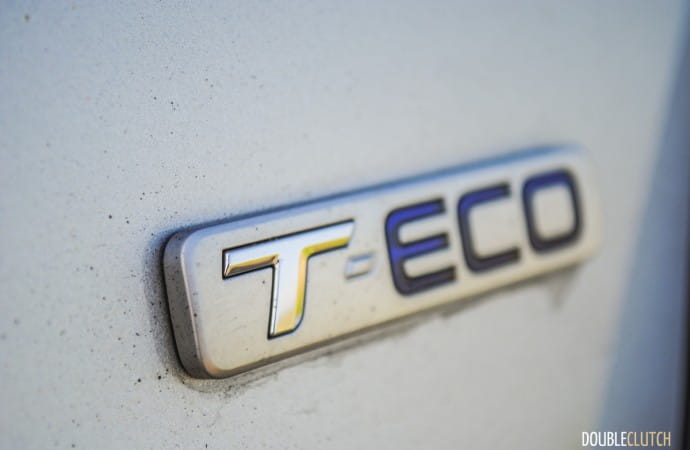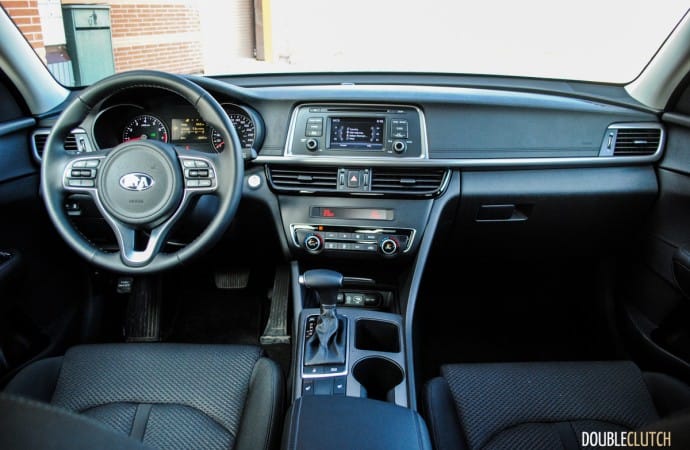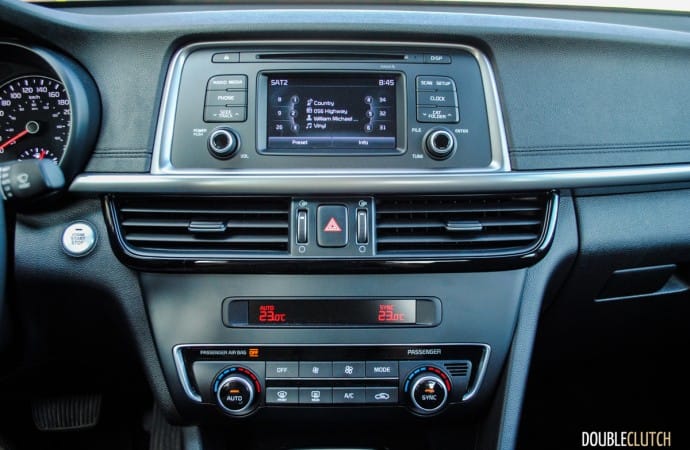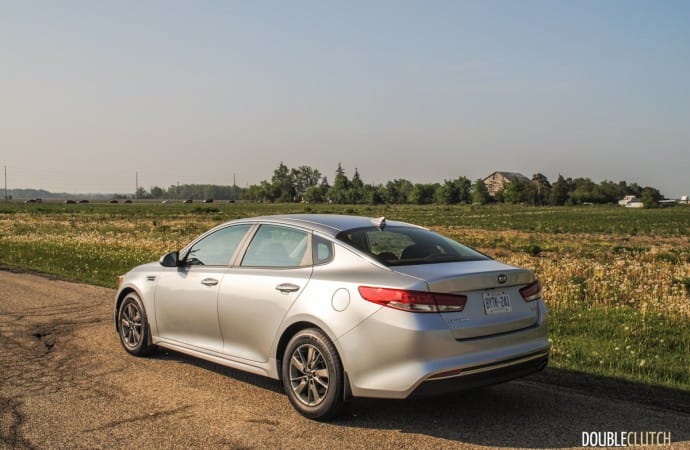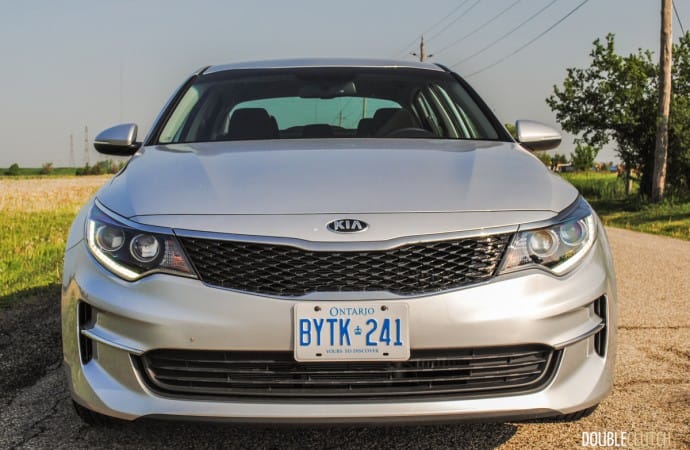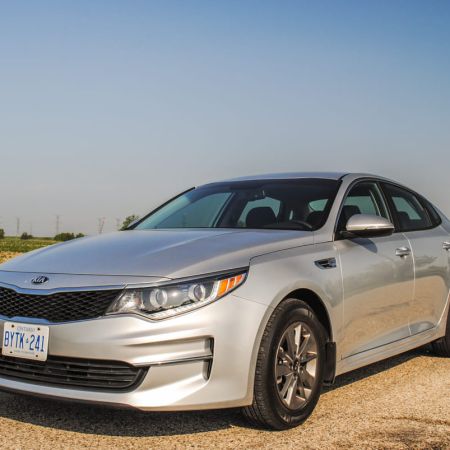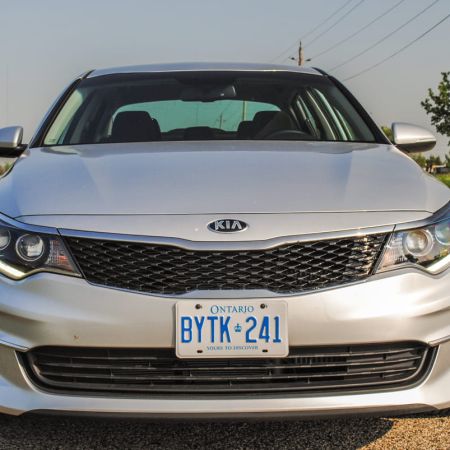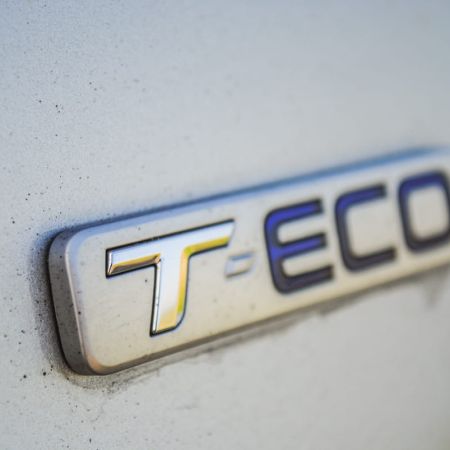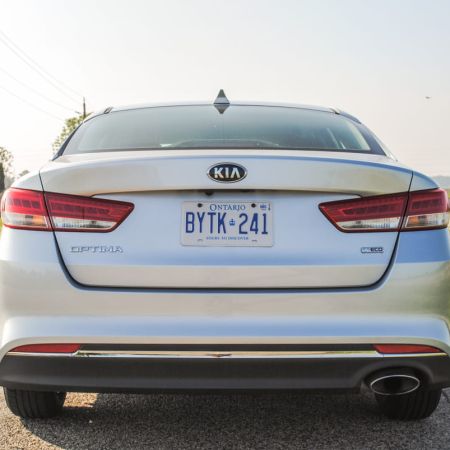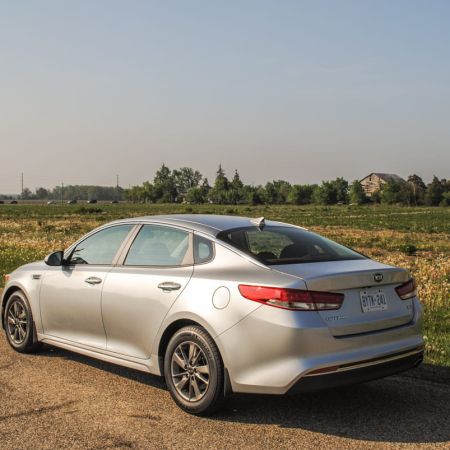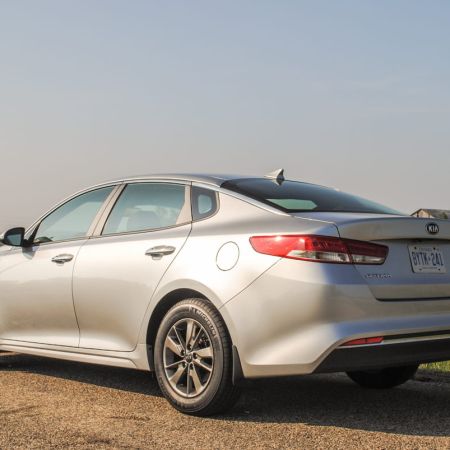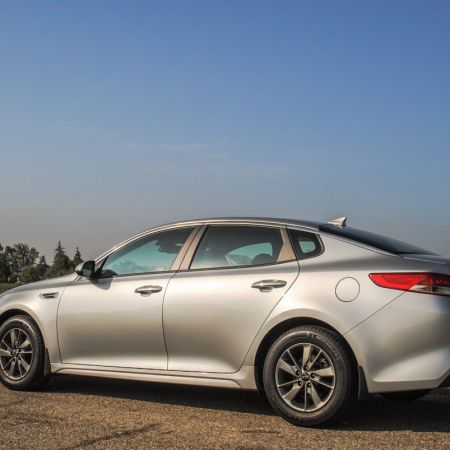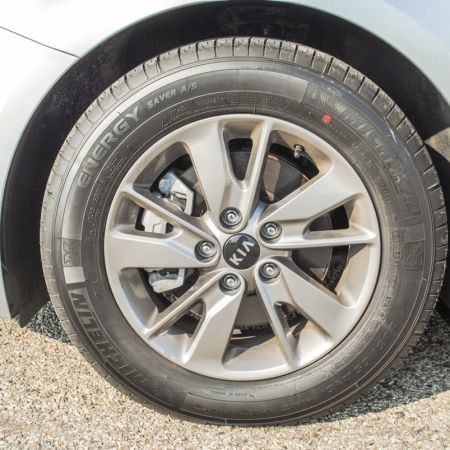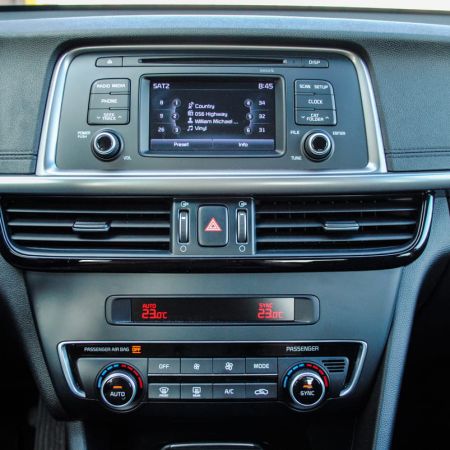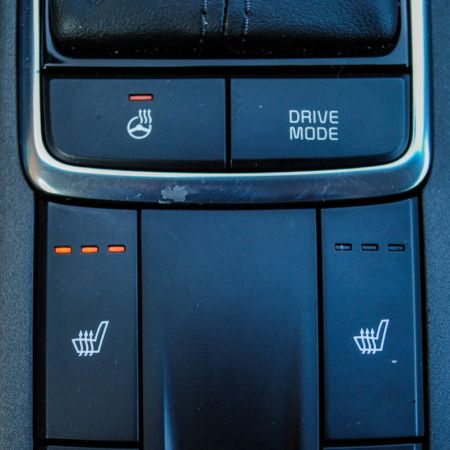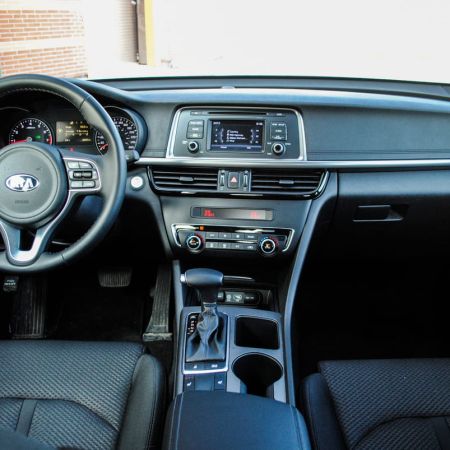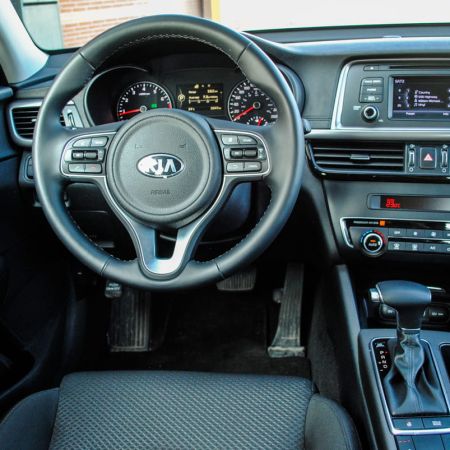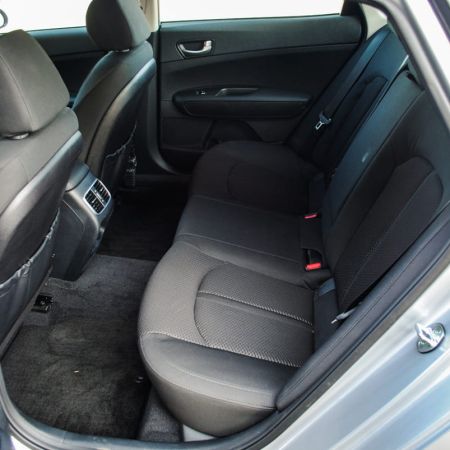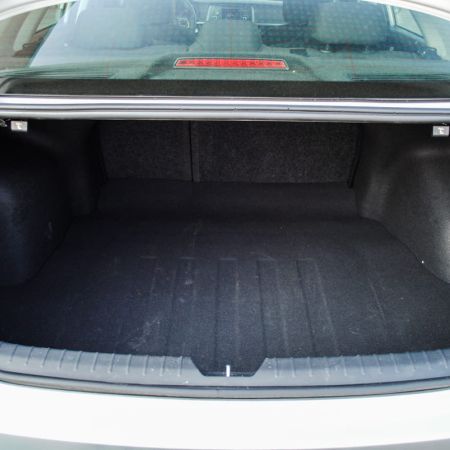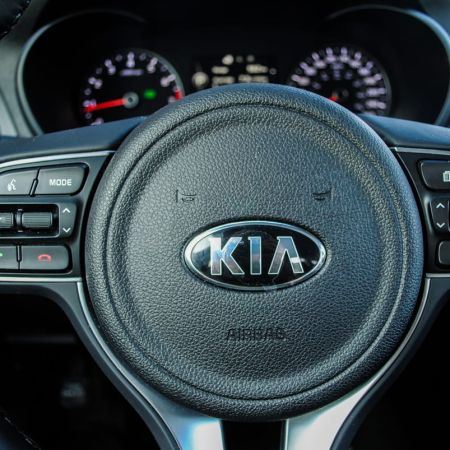The Optima has been an important car for Kia – it is the car that has carried the brand from its humble beginnings to its present status as a serious contender in one of the biggest segments in the industry. The latest Optima entered the scene during a time where the appeal of midsized sedans was quickly fading to crossovers, but it offered the right combination of edgy styling, convenience features and great value. That was six years ago, and the Optima has become a well-known and competitive family sedan, especially popular with younger professionals looking for their first family sedan. While the previous model was good, it was certainly not perfect. This 2016 Kia Optima LX ECO Turbo has been completely redesigned and re-engineered.
Now, at first glance the new model looks almost exactly like the old one. However, that’s not entirely true. While the designers at Kia have kept the general styling very similar to the previous generation, the car’s body has been lengthened by almost 10mm and its width has been increased by 30mm. That might not sound like a whole lot, but thanks to the revised front fascia, a new grill accentuates the additional width, making the new Optima look wider from the front. That’s not exactly a new concept, but it’s a look that has prevailed. Updated lights, both front and rear, tie the Optima into the rest of Kia’s refreshed line, and it all comes together quite well.
My particular test car represents the newest of the new. This is an LX ECO Turbo, which is currently the only trim level to receive the new 1.6L turbocharged inline four-cylinder and dual-clutch transmission. Curiously though, the LX ECO Turbo is a mid-range trim and therefore isn’t available with the full gamut of options that would be available to the upper trim levels. What it does offer is unique 16” alloy wheels with low rolling resistance tires, heated seats and steering wheel, dual-zone climate control, reverse camera, and a handful of other nice to have features. Would more gadgets such as a massive touch screen and cooled seats be great? Sure, but to be honest the only thing I really missed during my warm and sunny week with the Optima was a sunroof.
Missing sunroof aside, the interior of the new Optima is a very nice place to be. Overall quality and refinement inside the car is notably improved over the last generation, while a similar driver-centric layout has been maintained. I really like the layout of the controls in the car; I was immediately able to familiarize myself with everything including the steering wheel controls, which are very well integrated into the great looking leather wrapped wheel.
The LX ECO is not available with leather, which might be an issue for some buyers, but I found the black cloth seats in my test car to be very comfortable and reasonably upscale looking. I also particularly liked the soft, curved headrests, which help support a nice relaxed driving position. It’s pretty clear where the extra length in the new body went – rear legroom – which is downright luxurious in the new Optima. Space up front and in the rear cargo area is not in short supply either, and I am a big fan of the centre console with its large covered storage area, and additional open storage bin.
Notable improvements have been made on the mechanical front as well; the biggest being the new 1.6L turbo four-cylinder and seven-speed dual-clutch gearbox. As I mentioned, this driveline is only available on the LX ECO Turbo, but it is an important step for the Optima. As of right now, Optima is the only mainstream midsize sedan to offer a dual-clutch transmission. It does serve as a great match to the 1.6L and my only complaint after a week of driving the car is the tendency of the car to lurch forward while easing off the brake pedal, say while creeping along in traffic.
The 1.6L turbo, which is the same engine in the 2016 Hyundai Tucson (reviewed here), feels infinitely more responsive and engaging in the Optima than it did in the Tucson. Putting out 178 horsepower and 195 lb-ft of torque, the little 1.6L feels peppier than it really is thanks to its low-end torque and quick response from the seven-speed transmission. Compared to the 2.5L Nissan Altima just reviewed, this Optima feels positively quick.
The chassis of the new Optima has been improved for additional firmness; it does feel tighter and more composed through corners and rough streets. The steering does offer more road feedback than most mainstream midsize sedans, but it’s important to remember that the Optima is absolutely not a sports sedan. That said, this car does a truly excellent job of running the daily rush hour commute. On the highway it tracks perfectly straight, the cabin is nearly silent and it has plenty of passing power. Also impressive; no matter how hot it got outside, the Optima’s air conditioning was able to provide ice cold air almost instantly.
Adding to its suitability as a comfortable commuter, I observed some very impressive fuel economy numbers. Making use of the new drivetrain, my average for the week of commuting came out to 7.3L/100km. Considering I had to battle thick traffic, and used the A/C heavily during my test week, I’d say that’s a phenomenal number. What I really enjoy about the Optima ECO Turbo is that I gave up nothing in the way of convenience in order to achieve these fuel savings. I didn’t have to plug-in a charger, I didn’t need to watch my hybrid power flow, or give up cargo space to batteries. The Optima LX ECO saves fuel the old-fashioned way, by making the absolute most of simple internal combustion. That’s an eco-movement I can get behind.
I ended my week with the 2016 Kia Optima LX ECO Turbo with a very positive impression of the car. If I were in the market today for a new midsize sedan I would be giving this car some very serious consideration. Knowing just how intense the competition in this segment is, that’s saying a lot about the new Kia. After driving this car I’ve determined that I wouldn’t be willing to spend the extra money on a hybrid (or similar alternative), or inconvenience myself, to save a couple litres of fuel every hundred kilometers in comparison to the efficiency of a well-sorted traditional sedan. The folks at Kia have succeeded in making a good car great, while bringing some worthy innovation to market.

